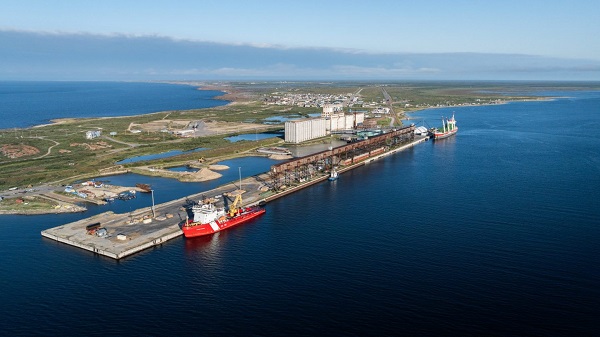Opinion
Budget 2019 – Poor wording requires 2 ex-spouses within 5 years for Home Buyers Plan

This is one of those rare times I hope I am wrong in my interpretation, and look forward to being proven wrong by my professional colleagues.
On March 19, 2019 the federal government tabled its election-year budget. One of the newest and strangest provisions is the ability for people going through a separation or divorce to potentially have access to their RRSP under the Home Buyers Plan.
Now in my article and podcast entitled: “Escape Room – The NEW Small Business Tax Game – Family Edition” with respect to the Tax On Split Income (TOSI) rules, I made a tongue in cheek argument that people will be better off if they split, because then the TOSI rules won’t apply.
In keeping with the divorce theme, beginning in the year of hindsight, 2020, the federal government is giving you an incentive to split up and get your own place.
However, there are a few hoops:
On page 402 of the budget, under new paragraph 146.01(2.1)(a), at the time of your RRSP withdrawal under the Home Buyers Plan, you must make sure that:
- – the home you are buying is not the current home you are living in and you are disposing of the interest in the current home within two years; or
- – you are buying out your former spouse in your current home; and
you need to:
- be living separate and apart from your spouse or common-law partner;
- have been living separate and apart for a period of at least 90 days (markdown October 3, 2019 on the calendar),
- began living separate and apart from your spouse or common-law partner, this year, or any time in the previous 4 years (ok, you don’t have to wait for October); and…
…here is where the tabled proposed legislation gets messy.
Proposed subparagraph 146.01(2.1)(a)(ii) refers to where the individual
- wouldn’t be entitled to the home buyers plan because of living with a previous spouse in the past 4 years that isn’t the current spouse they are separating from
“(ii) in the absence of this subsection, the individual would not have a regular eligible amount because of the application of paragraph (f) of that definition in respect of a spouse or common-law partner other than the spouse referred to in clauses (i)(A) to (C), and…”
The problem with the wording of this provision, is that it is written in the affirmative by the legislators using the word “and”. This means, you must be able to answer “true” to all the tests for the entire paragraph to apply.
The way I read this, the only way to answer “true” to this subparagraph is if you have a second spouse (ie: spouse other than the spouse referred to) that you shared a home with and you split from in the past four years.
If you have a second spouse that you shared a home with in the past four years, then “paragraph (f)” in the definition of “regular eligible amount” would apply and the answer would be “true”.
If the answer is “true” you can then get access to your RRSP Home Buyers Plan.
If you don’t have a second spouse then, even though “paragraph (f)” might be met, the phrase “spouse other than the spouse referred to” would not be met, and therefore the answer would be “false”.
This would, in turn, cause the entire logic test of the provision to be “false” and so you would not be able to take out a “regular eligible amount” from your RRSP for the Home Buyers plan because you do not meet the provisions.
If my interpretation is correct then I would really be curious as to what part of the economy they are trying to stimulate.
In my opinion the legislation could be fixed with a simple edit:
“(ii) in the absence of this subsection, the individual would not have a regular eligible amount because of the application of paragraph (f) of that definition in respect of:
(A) a spouse or common-law partner; or
(B) a spouse or common-law partner other than the spouse referred to in clauses (i)(A) to (C); and…”
—
Cory G. Litzenberger, CPA, CMA, CFP, C.Mgr is the President & Founder of CGL Strategic Business & Tax Advisors; you can find out more about Cory’s biography at http://www.CGLtax.ca/Litzenberger-Cory.html
Business
Carney should rethink ‘carbon capture’ climate cure

From the Fraser Institute
In case you missed it amid the din of Trump’s trade war, Prime Minister Carney is a big believer in “carbon capture and storage.” And his energy minister, Tim Hodgson, who said it’s “critical to build carbon capture systems for the oilsands,” wants the Smith government and oilsands companies to get behind a proposed project (which hasn’t been unable to raise sufficient private investment) in Cold Lake, Alberta.
The term “carbon capture and storage” (or CCS) essentially refers to technology that separates carbon dioxide (CO2) from emissions and either stores it or uses it for other products. Proponents claim that CCS could replace other more ham-handed climate regulations such as carbon taxes, emission caps, etc. The problem is, like many (or most) proposed climate panaceas, CCS is oversold. While it’s a real technology currently in use around the world (primarily to produce more oil and gas from depleting reservoirs), jurisdictions will likely be unable to affordably scale up CCS enough to capture and store enough greenhouse gas to meaningfully reduce the risks of predicted climate change.
Why? Because while you get energy out of converting methane (natural gas) to CO2 by burning it in a power plant to generate electricity, you have to put quite a lot of energy into the process if you want to capture, compress, transport and store the attendant CO2 emissions. Again, carbon capture can be profitable (on net) for use in producing more oil and gas from depleting reservoirs, and it has a long and respected role in oil and gas production, but it’s unclear that the technology has utility outside of private for-profit use.
And in fact, according to the International Institute for Sustainable Development (IISD), most CCS happening in Canada is less about storing carbon to avert climate change and more about stimulating oil production from existing operations. While there are “seven CCS projects currently operating in Canada, mostly in the oil and gas sector, capturing about 0.5% of national emissions,” CCS in oil and gas production does not address emissions from “downstream uses of those fuels” and will, perversely, lead to more CO2 emissions on net. The IISD also notes that CCS is expensive, costing up to C$200 per tonne for current projects. (For reference, today’s government-set minimum carbon market price to emit a tonne of CO2 emissions is C$95.) IISD concludes CCS is “energy intensive, slow to implement, and unproven at scale, making it a poor strategy for decarbonizing oil and gas production.”
Another article in Scientific American observes that industrial carbon capture projects are “too small to matter” and that “today’s largest carbon capture projects only remove a few seconds’ worth of our yearly greenhouse gas emissions” and that this is “costing thousands of dollars for every ton of CO2 removed.” And as a way to capture massive volumes of CO2 (from industrial emission streams of out the air) and sequestering it to forestall atmospheric warming (climate change), the prospects are not good. Perhaps this is why the article’s author characterizes CCS as a “figleaf” for the fossil fuel industry (and now, apparently, the Carney government) to pretend they are reducing GHG emissions.
Prime Minister Carney should sharpen his thinking on CCS. While real and profitable when used in oil and gas production, it’s unlikely to be useful in combatting climate change. Best to avoid yet another costly climate change “solution” that is overpromised, overpriced and has historically underperformed.
Energy
Is Carney ‘All Hat And No Cattle’?

From the National Citizens Coalition
By National Citizens Coalition President Peter Coleman
Mark Carney promised to lead Canada with bold vision and economic strength. But his latest stall tactics on removing red tape for Canadian oil and gas, his floundering in tariff negotiations despite lofty “elbows up” promises, and his refusal to address shocking interference allegations tied to his public safety minister so far show that he’s all hat and no cattle.
Today, Prime Minister Mark Carney held consultations and conversations with Indigenous groups on Bill C-5, which claims to fast-track “nation-building” energy projects. Yet he announced no major approvals on the horizon, and impressed no urgency or authority upon those in attendance who would seek to claim veto over vital projects.
Canada doesn’t need more endless talk or one bill to pick more losers than winners. We need action to remove anti-resource laws and regulatory roadblocks that choke our energy sector. Projects like pipelines and LNG facilities are critical for jobs, economic growth, and energy security, but they’re stalled by bureaucratic overreach and outdated policies. Hard-working Canadians deserve affordable energy. Our economy needs rescuing from tariff threat and a decade of Liberal sabotage. And Indigenous communities deserve real economic partnerships, not more delays and cowardly half-measures that often only placate anti-resource interests and insiders, not the real needs of the community.
Streamlined approvals with clear economic benefits will unlock prosperity for all Canadians. Carney’s stall tactics only hold back progress. It’s time to cut the red tape and get out of the way so that real Canadian leaders, and our great Canadian workers, can rebuild Canada after all that’s been broken.
Carney campaigned as the economic genius who could handle U.S. President Donald Trump’s tariff threats. Yet, with Trump’s August 1 deadline for a 35% tariff on Canadian goods approaching, Carney’s negotiations are going nowhere. His vague promises do nothing to protect Canadian jobs, industries, or families facing higher costs. Canadians deserve a leader who delivers results, not one who breaks campaign promises with empty rhetoric.
Meanwhile, he’s been shielding corruption and dodging accountability. Carney, now revealed to have 16 pages of conflicts that were kept from voters during the election, continues to protect Public Safety Minister Gary Anandasangaree, who faces serious allegations of lobbying for those with listed terrorist ties. Instead of demanding transparency, Carney is shielding his minister from scrutiny, doubling down on the Liberal tradition of dodging accountability. Canadians deserve a government that upholds integrity, not one that buries troubling connections to protect political allies. Is Carney just like Justin, who broke immigration and invited rampant foreign interference into government? Because this response is right out of his predecessor’s playbook.
Mark Carney’s leadership has been all talk and no action. Canada needs a government that unleashes our energy potential, lives up to its lofty campaign promises, and roots out corruption; not another Justin Trudeau.
We’re not falling for it. And neither are you. Demand action. Demand results.
–Peter Coleman, President, National Citizens Coalition
-

 Education1 day ago
Education1 day agoWhy more parents are turning to Christian schools
-

 Alberta1 day ago
Alberta1 day agoOPEC+ is playing a dangerous game with oil
-

 Alberta1 day ago
Alberta1 day agoUpgrades at Port of Churchill spark ambitions for nation-building Arctic exports
-

 Business1 day ago
Business1 day agoIs dirty Chinese money undermining Canada’s Arctic?
-

 COVID-191 day ago
COVID-191 day agoJapan disposes $1.6 billion worth of COVID drugs nobody used
-

 conflict1 day ago
conflict1 day agoOne of the world’s oldest Christian Communities is dying in Syria. Will the West stay silent?
-

 COVID-191 day ago
COVID-191 day agoWATCH: Big Pharma scientist admits COVID shot not ‘safe and effective’ to O’Keefe journalist
-

 Bruce Dowbiggin1 day ago
Bruce Dowbiggin1 day agoHow Did PEI Become A Forward Branch Plant For Xi’s China?






